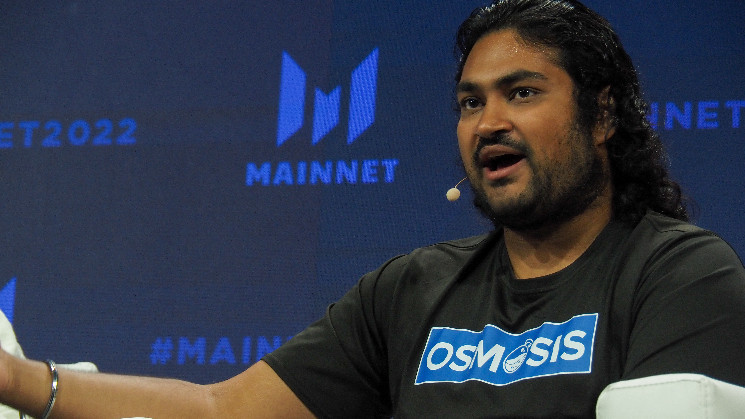Osmosis, the popular decentralized exchange (DEX), announced the launch of Polaris, described as a "token portal" aimed at solving one of decentralized finance's biggest challenges: fragmented user experience.
According to the team, the platform will allow users to trade tokens across multiple blockchains through a single interface, eliminating the need for multiple wallets, bridges, and gas tokens.
Polaris marks a strategy shift for Osmosis, one of the flagship networks in the Cosmos ecosystem’s web of interconnected blockchains.
The exchange has historically promoted itself as a unified liquidity venue for Cosmos-based networks. Polaris, by contrast, will work equally well for non-Cosmos chains like Ethereum and Solana, and it will take a new approach to dealing with liquidity.
"We still believe in our original hypothesis, which is that people want to trade everything in one spot," Sunny Aggarwal, co-founder of Osmosis and Polaris, said in an interview with CoinDesk. "But trying to aggregate everything into a single liquidity venue is just not going to work."
The assets that people trade on Osmosis live inside of "liquidity pools" – crypto wallets on the Osmosis network that are pre-programmed to buy and sell tokens from users. This system is similar to the one used by popular decentralized exchanges like Uniswap, and it means that liquidity – the piles of tokens traded on Osmosis and other DEXes – are scattered across dozens of different exchange apps.
“The UX of DeFi today feels extremely fragmented as everything is architected in a very chain-centric way,” Aggarwal said in a statement shared with CoinDesk. Chains often focus on metrics like total value locked (TVL) – collateral or deposits locked into a DeFi protocol – to attract capital, resulting in fragmented liquidity and a suboptimal user experience (UX), said the team.
As a result of the "Great Chain Divide," as Osmosis calls it, DeFi platforms generally operate in their own little universes, each with its own stockpiles of assets for users to buy and sell. Because these stockpiles tend to live on different blockchains, serious crypto trading generally requires one to download and keep track of a myriad of different wallet tools – a huge pain for users.
Polaris lets users trade tokens between different blockchain networks without forcing those assets to reside in a single spot.
"Polaris is us taking a lot of the UX and UI components that, on Osmosis, we think are pretty awesome, and then we make them work in a cross-chain way," said Aggarwal. "So you can trade EVM assets and Solana assets and Cosmos assets and everything in one DEX."
Polaris manually integrates with existing DEXes and liquidity venues rather than competing with them, allowing users to access liquidity across networks. The platform’s "bridge abstraction" feature also enables seamless cross-chain trading, making it possible for users to swap assets like USDC on Ethereum for Bitcoin without the friction of manual processes. Additionally, users can track their entire portfolio across multiple chains in one place.
Polaris isn't the first platform to help users trade assets between chains. Centralized exchanges like Coinbase and Kraken have long allowed similar functionality, but they come with the caveat that they take full custody of user assets – anathema to crypto principles around "decentralization."
Other DeFi products have taken swings at similar tech, however, and Polaris will need to differentiate itself in what's sure to be a crowded field of UX-focused competitors.
 coindesk.com
coindesk.com
